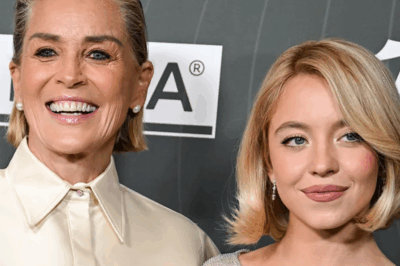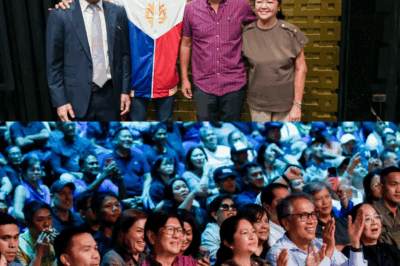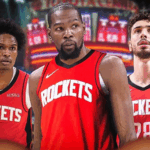The Hidden Struggle Within the Democratic Party: Unpacking the Quiet Civil War
In recent years, the political landscape in the United States has been marked by intense polarization, ideological clashes, and a shifting balance of power within the two major parties.
While much attention has been paid to the overt battles between Republicans and Democrats, a more subtle, yet equally significant conflict has been brewing beneath the surface within the Democratic Party itself.
As political commentator Chris Cuomo recently pointed out, “The truth is, there’s a quiet civil war going on in the Democratic Party right now.”
This statement captures a complex and nuanced reality: the internal divisions, ideological disagreements, and strategic disagreements that threaten to reshape the future of the party.
In this comprehensive analysis, we will explore the origins of this internal conflict, the key factions involved, the ideological divides, and what this means for the future of the Democratic Party and American politics as a whole.
We’ll delve into the historical context, examine recent events, and provide insights into how this quiet civil war is influencing policy debates, electoral strategies, and the party’s overall direction.
The Roots of the Internal Divide

The Democratic Party has historically been a broad coalition, encompassing a wide range of ideological perspectives, demographic groups, and regional interests.
From progressive activists and labor unions to moderates and centrist policymakers, the party’s diversity has often been its strength.
However, this diversity has also created fertile ground for internal disagreements, especially as the political climate has become more polarized.
The rise of progressive figures like Bernie Sanders and Alexandria Ocasio-Cortez has challenged the more centrist, establishment wing of the party, represented by figures such as Joe Biden and Hillary Clinton.
These ideological clashes have intensified over the past decade, fueled by debates over healthcare, economic policy, climate change, and social justice issues.
The emergence of the “Squad,” a group of progressive Democratic members of Congress, exemplifies this ideological divide.
These lawmakers advocate for bold reforms such as “Medicare for All,” the Green New Deal, and defunding the police—positions that often clash with the more pragmatic, moderate approach favored by party leadership.
The Factions Within the Democratic Party
To understand the ongoing internal conflict, it’s essential to identify the main factions within the party:
The Progressive Wing: This faction is characterized by a desire for sweeping reforms and a willingness to challenge the status quo.
They emphasize issues like economic inequality, racial justice, climate action, and healthcare reform. Prominent figures include Bernie Sanders, Alexandria Ocasio-Cortez, and Elizabeth Warren.
The Moderate/Centrist Wing: This group tends to prioritize pragmatic governance, fiscal responsibility, and incremental change.
They often advocate for working within the existing political system to achieve policy goals. Key figures include Joe Biden, Chuck Schumer, and many senior Democratic senators and representatives.
The Establishment: Historically aligned with the party’s leadership, this faction seeks to maintain the party’s electoral viability by appealing to a broad electorate.
They often focus on winning swing districts and states, emphasizing electability over ideological purity.
The Progressive-Moderate Crossroads: Increasingly, these factions are at odds over strategy, messaging, and policy priorities.
The tension between the desire for transformative change and the need for electoral pragmatism has become a defining feature of the party’s internal dynamics.
Ideological Clashes and Policy Disputes
The internal civil war manifests most vividly in policy debates. For example, the debate over healthcare reform has been a flashpoint: progressives push for a single-payer system like Medicare for All, while moderates favor a more gradual approach, such as expanding the Affordable Care Act.
Similarly, climate policy has become a battleground. The Green New Deal, championed by progressives, calls for ambitious transformations to combat climate change, whereas moderates argue for more measured, economically feasible policies.
Economic policy also highlights the divide. Progressives advocate for higher taxes on the wealthy, increased social spending, and measures to reduce income inequality.
Moderates often emphasize fiscal responsibility, deficit reduction, and bipartisan cooperation.
Social issues such as criminal justice reform, immigration, and voting rights further deepen the internal divisions. While progressives push for bold reforms, moderates sometimes adopt a more cautious stance, fearing electoral backlash.
The Role of Electoral Strategy and Political Calculus
Internal disagreements are not solely ideological—they also reflect strategic calculations about how to win elections and maintain power.
The progressive wing argues that bold policies energize the base and attract new voters, especially among young and minority voters.
Conversely, moderates contend that more moderate messaging is necessary to appeal to swing voters and independents in key battleground states.
This strategic tension influences primary battles, candidate endorsements, and legislative priorities.
For example, the 2020 Democratic primary saw a fierce contest between Bernie Sanders and Joe Biden, embodying the broader ideological struggle within the party.
The Impact on Party Unity and Electoral Success
The internal civil war has tangible consequences for the Democratic Party’s unity and electoral prospects.
While the party has managed to unite behind a candidate in presidential elections, internal divisions often surface during legislative negotiations and campaign seasons.
The challenge for Democrats is balancing the desire for progressive change with the need to retain a broad electoral coalition.
Failure to reconcile these differences risks alienating key constituencies and undermining the party’s ability to govern effectively.
Recent Developments and Current Dynamics
In recent months, several developments have highlighted the ongoing internal conflict:
Legislative Battles: Disagreements over the scope and funding of social programs, infrastructure bills, and climate initiatives have revealed fissures within the party caucus.
Primary Challenges: Progressive challengers have mounted primary campaigns against incumbent moderates, reflecting the ideological contest within the party.
Leadership Tensions: Reports of friction between party leaders and progressive lawmakers indicate ongoing power struggles and differing visions for the party’s future.
What Does the Future Hold?
The quiet civil war within the Democratic Party is far from over. It raises critical questions about the party’s ability to present a unified front, pass legislation, and win future elections.
Will the party find a way to bridge the ideological divide, or will internal tensions continue to simmer and shape its trajectory?
Some analysts believe that the party’s future depends on its ability to embrace a pragmatic approach that incorporates progressive ideals while maintaining electoral viability.
Others argue that the internal conflict is a sign of a party in transition, grappling with its identity in a rapidly changing political landscape.
Conclusion: A Tense but Transformative Moment
The internal civil war within the Democratic Party is a defining feature of American politics today. While it often plays out quietly and behind closed doors, its implications are profound.
The outcome of this internal struggle will influence policy directions, electoral strategies, and the party’s ability to adapt to an evolving electorate.
As Chris Cuomo aptly noted, this is a “quiet civil war”—a battle for the soul of the Democratic Party that will shape the future of American democracy.
Understanding these internal dynamics is essential for anyone seeking to grasp the complexities of contemporary politics and the forces driving change within one of the nation’s two major political parties.
News
Kevin Durant Shines Bright as Houston Rockets Secure Impressive Victory Over Toronto Raptors
Kevin Durant Shines Bright as Houston Rockets Secure Impressive Victory Over Toronto Raptors In a thrilling display of basketball prowess,…
Sharon Stone Publicly Supports Sydney Sweeney Amid Controversy Over American Eagle “Great Jeans” Campaign
Sharon Stone Publicly Supports Sydney Sweeney Amid Controversy Over American Eagle “Great Jeans” Campaign In recent weeks, the entertainment and…
Breaking News: Dr. Phil Faces Major Setback in Bankruptcy Trial – A Deep Dive into the Details
Breaking News: Dr. Phil Faces Major Setback in Bankruptcy Trial – A Deep Dive into the Details In a shocking…
Caitlin Clark’s Charitable Work Genuine or a Calculated PR Strategy? Critics Question the Motives Behind Her Acts of Kindness and the Role of “Pretty Privilege” in Her Rise to Fame
Caitlin Clark’s Charitable Work Genuine or a Calculated PR Strategy? Critics Question the Motives Behind Her Acts of Kindness and…
Hollywood Reporter Secures Prestigious Nominations in National Arts & Entertainment Journalism Awards
Hollywood Reporter Secures Prestigious Nominations in National Arts & Entertainment Journalism Awards In a remarkable achievement that underscores its enduring…
President Ferdinand Marcos Jr. and First Lady Liza Araneta-Marcos Lead Commemoration of the 50th Anniversary of the “Thrilla in Manila” at Smart Araneta Coliseum
President Ferdinand Marcos Jr. and First Lady Liza Araneta-Marcos Lead Commemoration of the 50th Anniversary of the “Thrilla in Manila”…
End of content
No more pages to load












